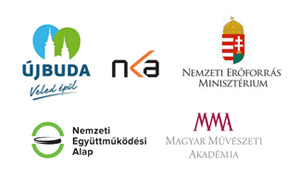Rugs, which in the West satisfied luxury needs, were in the East made for everyday use in nomadic society. Rugs covered the floors and the walls of tents which served as the homes for the both the common people and the dignitaries, valuables were kept and transported in bags made from rugs, animals were covered with rugs, and families ate, prayed and rested on them. Newborn children were wrapped in them, and the dead were laid out on them.”
“The fashion for tents did not end when people settled down in fixed places and built stone dwellings.
In the written Hungarian sources from the time of Árpád kings, the term carpet or tapestry occurs on a number of occasions. It is sometimes conceivable that the references are actually to woven tapestries, but usually this expression refers to patterned silk tapestries, embroidered tapestries, dyed tapestries, tapestries adorned with appliqued work, or even leather tapestries.
Carpets and upholstery often feature later on also in the written documents, in dowry lists, in wills, in account books, and – all of a sudden – in inventories.
According to the Kolozsvár data (30), the cheapest were the trimmings and fur tapestries; these were made from wool and were perhaps similar to thick woolen bedcovers. Among the woolen wall tapestries, we come across those with the designations Saxon and Szekler. These were made here in Hungary. From the East were imported kilims … woven from wool, and the Turkish tapestries which appear in the inventories of the princes of Transylvania. This last type was very costly, being a silk tapestry embellished with embroidery and woven with gold thread. Of the tapestries originating in the West, the most common was the canvas tapestry, a dyed copy of the expensive Western pictorial tapestry. Initially most were made in Vienna; later on we encounter Hungarian tapestry designers, too.
Patterned silk and velvet brocades, Italian tapestries, were also expensive… The expression Viennese tapestries, which were green in colour, was still current. The adjectives pictorial, Flemishí and chase referred to woven tapestries. Mention was also made of Polish tapestries. Large numbers of escutcheoned carpets were made in the East for the European market for example, valuable Polish carpets, which among others we know about through a letter of order sent by King Sigismund III in 1601.





